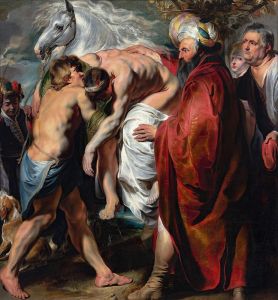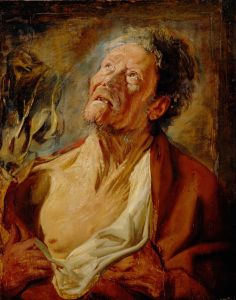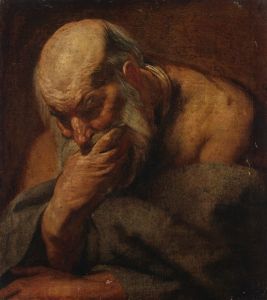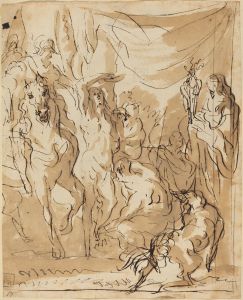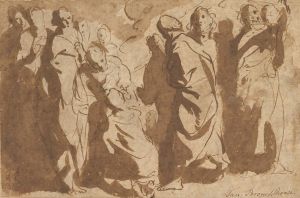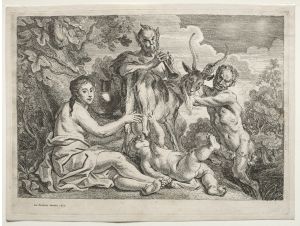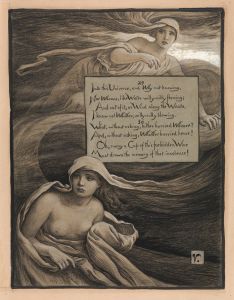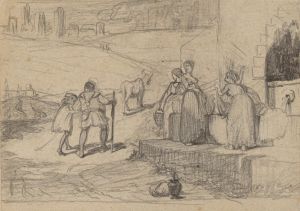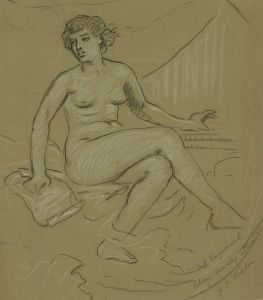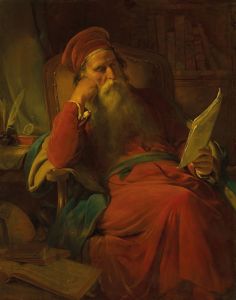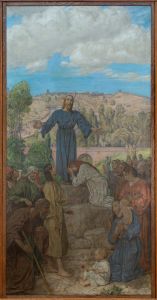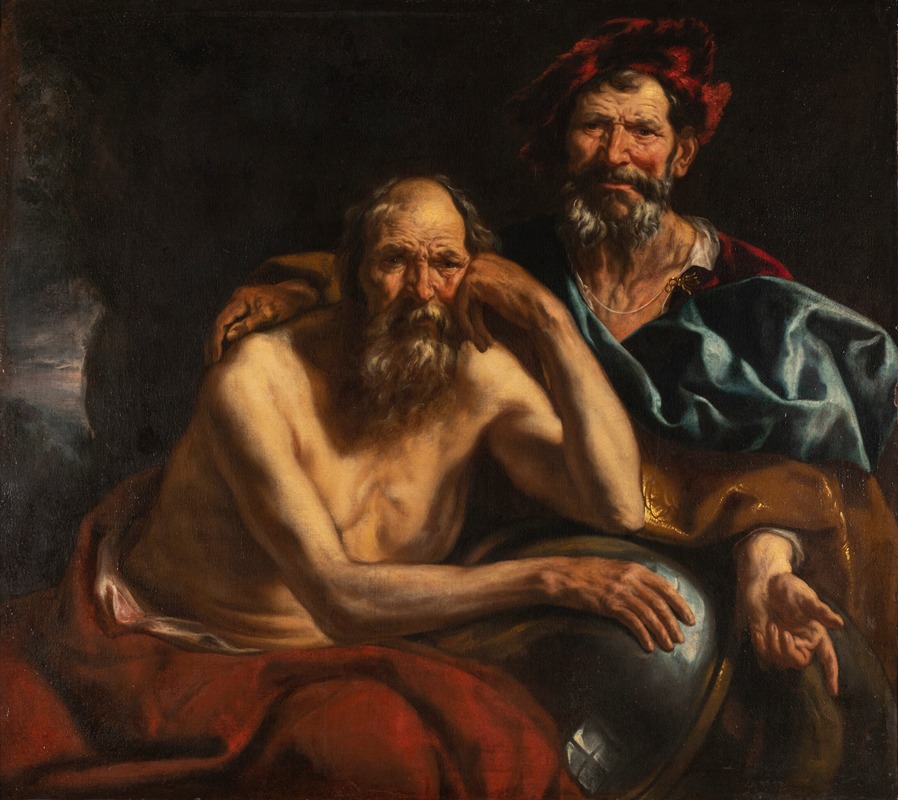
Democritus and Heraclitus
A hand-painted replica of Jacob Jordaens’s masterpiece Democritus and Heraclitus, meticulously crafted by professional artists to capture the true essence of the original. Each piece is created with museum-quality canvas and rare mineral pigments, carefully painted by experienced artists with delicate brushstrokes and rich, layered colors to perfectly recreate the texture of the original artwork. Unlike machine-printed reproductions, this hand-painted version brings the painting to life, infused with the artist’s emotions and skill in every stroke. Whether for personal collection or home decoration, it instantly elevates the artistic atmosphere of any space.
"Democritus and Heraclitus" is a painting by the Flemish Baroque artist Jacob Jordaens, created around 1640. Jordaens, who was born in Antwerp in 1593 and died in 1678, was one of the leading painters of his time, known for his vibrant use of color and dynamic compositions. He was a contemporary of Peter Paul Rubens and Anthony van Dyck, and his works often depicted scenes from mythology, history, and everyday life.
The painting "Democritus and Heraclitus" portrays two ancient Greek philosophers, Democritus and Heraclitus, who are often contrasted in philosophical literature. Democritus, known as the "laughing philosopher," is depicted with a cheerful expression, symbolizing his belief in the joy and absurdity of human existence. Heraclitus, on the other hand, is known as the "weeping philosopher" and is shown with a sorrowful demeanor, reflecting his view of the world as a place of constant change and suffering.
Jordaens' depiction of these two figures is rich in symbolism and character study. Democritus is often associated with the idea that everything in the universe is composed of atoms and that human beings should seek happiness through knowledge and understanding. Heraclitus, famous for his doctrine that "everything flows" (panta rhei), believed that the universe is in a constant state of flux and that strife and conflict are fundamental to the nature of existence.
In the painting, Jordaens captures the contrasting philosophies of these two thinkers through their facial expressions and body language. Democritus is shown laughing heartily, perhaps at the folly of human endeavors, while Heraclitus appears pensive and melancholic, contemplating the transience and turmoil of life. The artist's use of light and shadow enhances the emotional impact of the scene, highlighting the philosophical dichotomy between laughter and tears.
The work is a fine example of Jordaens' ability to convey complex ideas through his art. His skillful use of color, texture, and composition brings the figures to life, making their philosophical differences palpable to the viewer. The painting also reflects the Baroque interest in human emotion and the exploration of contrasting states of mind.
"Democritus and Heraclitus" is housed in the Alte Pinakothek in Munich, Germany, where it remains an important piece of the museum's collection. The painting not only showcases Jordaens' technical prowess but also his deep engagement with classical themes and his ability to translate philosophical concepts into visual form.
Overall, Jacob Jordaens' "Democritus and Heraclitus" is a masterful representation of two of antiquity's most intriguing philosophers, capturing their divergent views on life with both humor and pathos. The painting continues to be admired for its artistic excellence and its insightful portrayal of human nature.





